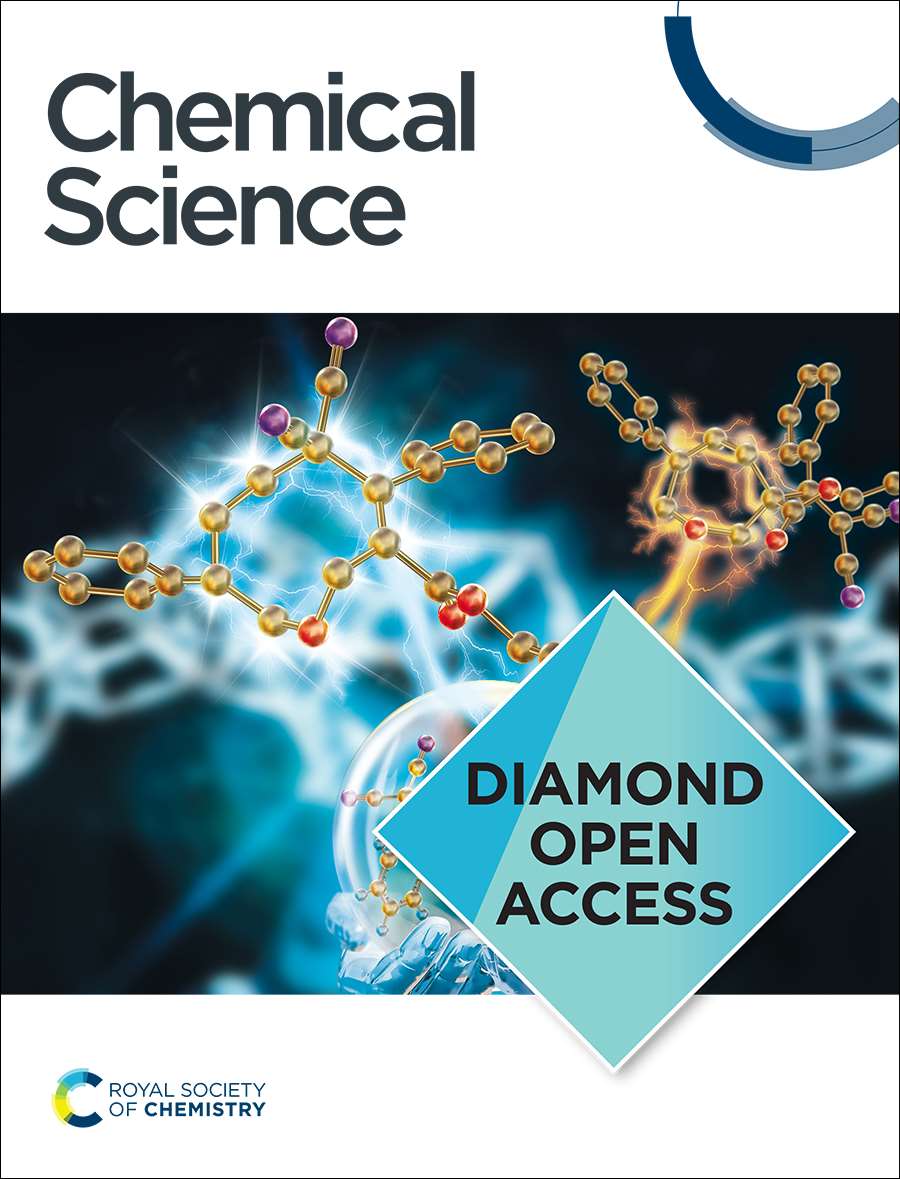Rigorous Treatment of Polytopal Rearrangements Reveal Surprising Complexity of Stereoisomerism Configuration Landscapes
IF 7.6
1区 化学
Q1 CHEMISTRY, MULTIDISCIPLINARY
引用次数: 0
Abstract
Previously we posited that a systematic and general description of stereoisomerism could be based upon the principles of the polytopal rearrangement model. The most daunting challenge to this end is to comprehensively describe all possible geometries for arbitrary n-coordinate centres, ABn, and for this we have developed a physically-inspired rigorous approach. Here we demonstrate the detailed application of this approach to the AB4 system focussing on e-symmetric distortions of tetrahedral geometry to generate an angular configuration space (the AB4 T-4 E-mode space). Analytic expressions for the A–Bi unit vector configurations are presented and the resulting spherical (2D) configuration space is shown to exhibit the symmetries of a disdyakis dodecahedron. Detailed inspection and analysis of the angular configuration space reveals that, in addition to the expected (T-4-R) ⇌ (T-4-S) pseudorotation, it features numerous “orientation permutations” that are also pseudorotations. Through the worked examples of SiF4, XeF4, and a chiral silane, we generate the corresponding potential energy surfaces and examine the wider implications. We also outline experimental opportunities for investigating the unexpected configuration space complexity that this work has revealed. This rigorous and mathematically comprehensive approach and framework we name the Polytope Formalism.求助全文
约1分钟内获得全文
求助全文
来源期刊

Chemical Science
CHEMISTRY, MULTIDISCIPLINARY-
CiteScore
14.40
自引率
4.80%
发文量
1352
审稿时长
2.1 months
期刊介绍:
Chemical Science is a journal that encompasses various disciplines within the chemical sciences. Its scope includes publishing ground-breaking research with significant implications for its respective field, as well as appealing to a wider audience in related areas. To be considered for publication, articles must showcase innovative and original advances in their field of study and be presented in a manner that is understandable to scientists from diverse backgrounds. However, the journal generally does not publish highly specialized research.
 求助内容:
求助内容: 应助结果提醒方式:
应助结果提醒方式:


